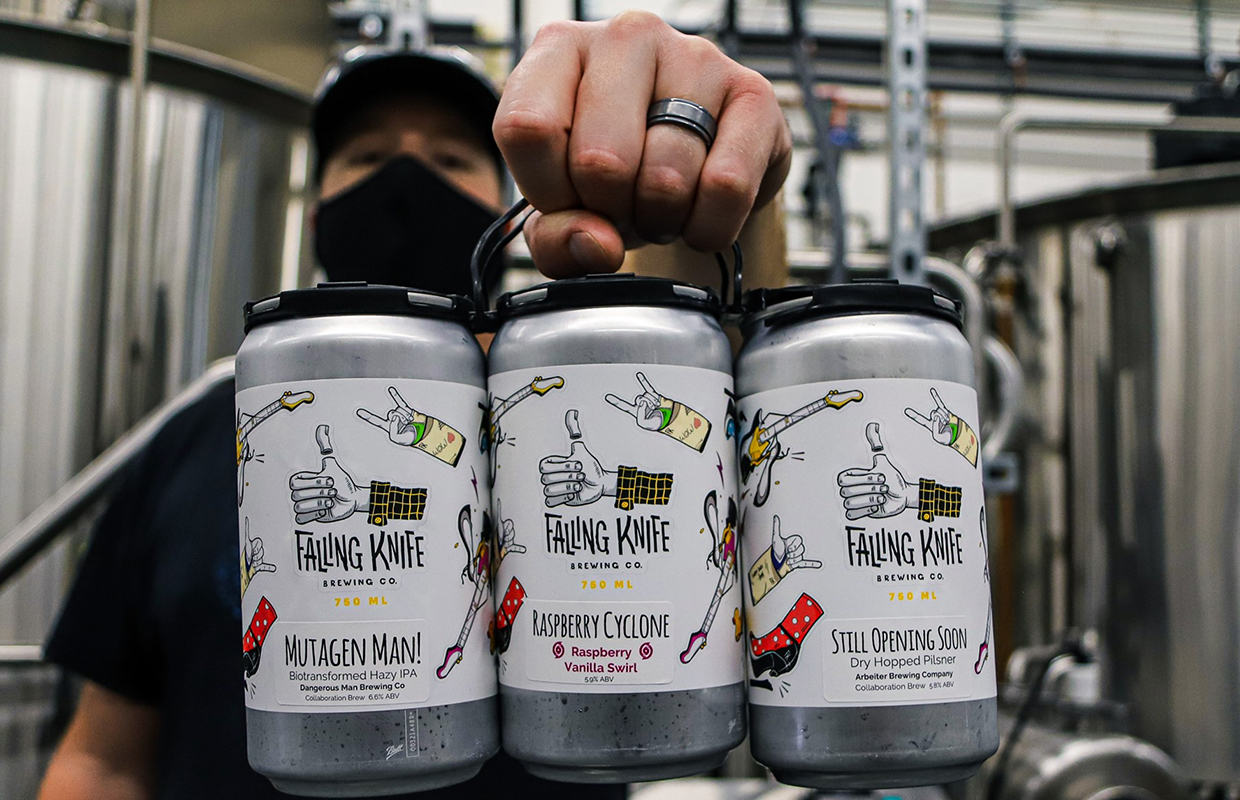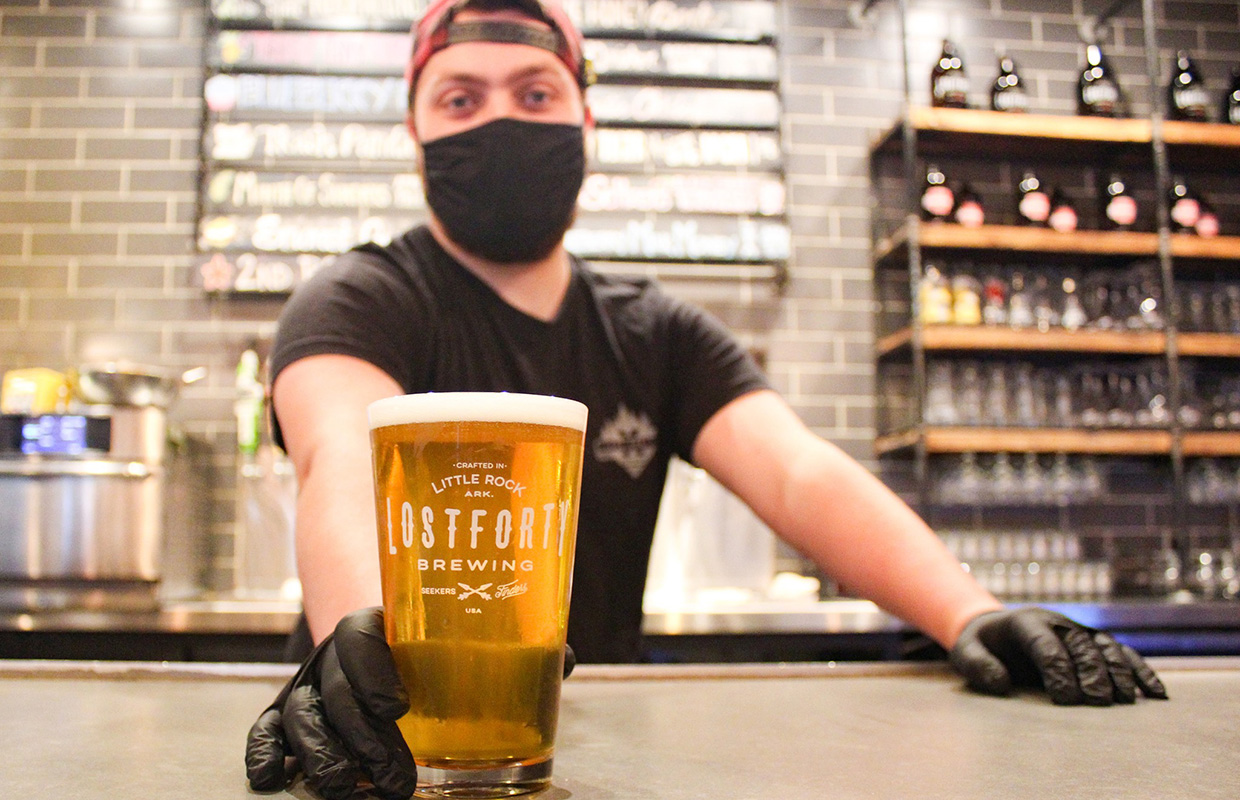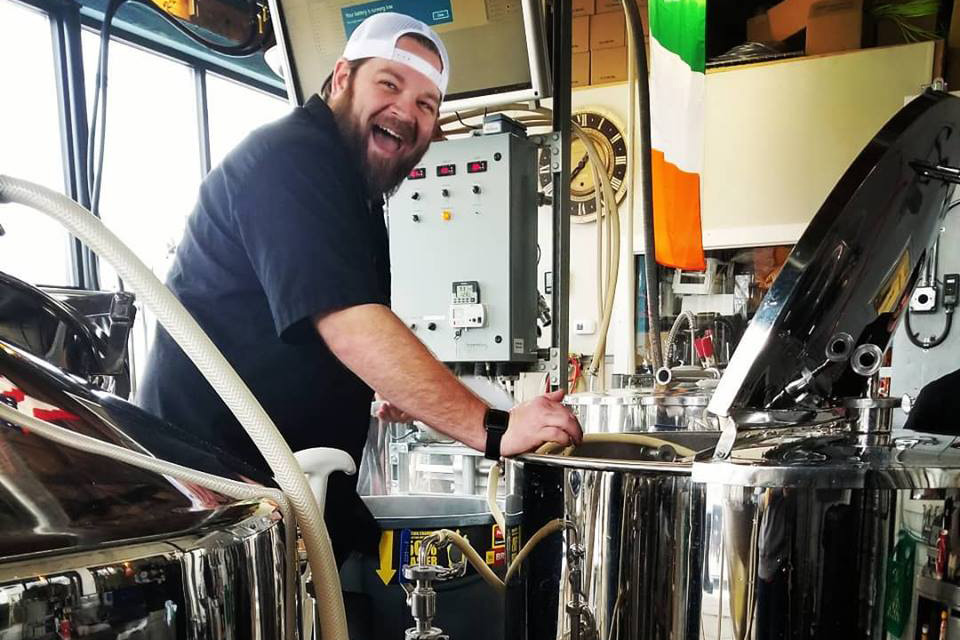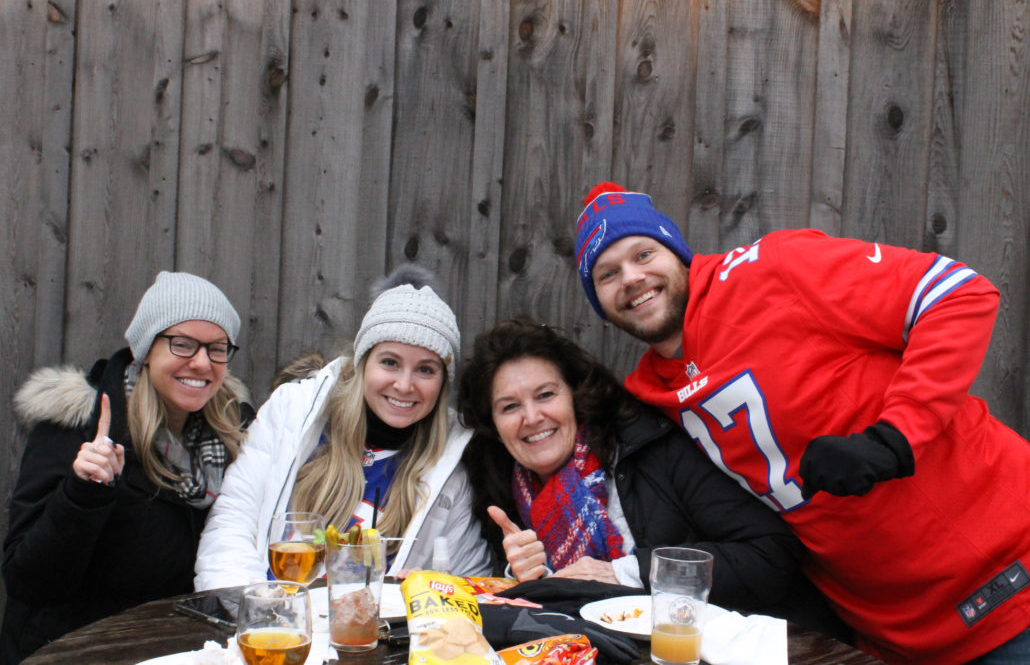
Ever sit at the bar — or at home, now — with a bottle or can of beer and pick at the label? Yeah, Dan Herman does as well. The Chief Revenue Officer of Minneapolis’ Falling Knife says it “scratches an itch” to remove the label, so when Charles Awad came to him with an interesting idea for labeling the brewery’s cans, bottles, and crowlers, he leaped at the prospect.
Because Falling Knife labels are meant to be peeled. Peeling the label off is a prize that lands consumers stickers that are re-stickable somewhere else.
“Somebody will post a picture of them drinking a Falling Knife can and their friend chimes in with, ‘Don’t forget to peel the sticker,’ Herman said, “And then we’ll see another picture a little bit later than we are tagged in with a comment like: ‘IT HAS STICKERS!'”
The double-backed label was an idea that Awad, who is the brewery’s Creative Director and runs a studio called Patmos Design & Identity, formulated a few years back and pitched it to Falling Knife before it opened in 2019. Technically, yes, you could remove the entirety label, it’s just that there’s a central piece that is die-cut out so the central illustration gets peeled off.
“It is, in fact, a truly unique idea nobody else currently does with the piggyback stickers on labels,” Awad said. “I’m not aware of anyone else doing it. And if they do, then they’re at least a year behind us because we’ve been doing this for a while.”
The concept itself originated from Awad because he loved what The Alchemist was doing by using small circular stickers as labels on some brands.
“I would carefully peel off that little circular sticker and slap it on my cupboard, because I just thought, how cool is that they got this little sticker. It’s not like a giant label,” Awad recalls. But the laborious and careful peeling was the task he felt could be eliminated while having a sticky back remaining as well. He spent a year devising a method alongside a print partner to be able to accomplish the goal.
“Finally, through testing it for temperature and moisture saturation and all other elements, we were able to find a way to do it,” he said. “I had tried it with one other client before Falling Knife. But my prior clients used it very briefly and decided to no longer do it.
“I asked the guys at Falling Knife if they would like to pursue that as sort of our bread and butter for packaging and being able to market that and they were gung-ho to do it.”
Primarily focused on the Twin Cities and parts of Wisconsin, Falling Knife has geared its marketing toward the stickers to consumers through commercials and videos, and photos on social media. The cans also make sure to inform a consumer that the main art is a removable sticker.
The process, Awad said, is proprietary but would divulge that it is a double-backed label that the top label sits on.
“It really does a couple of things for us that I think is pretty brilliant,” Herman said. “Every time somebody has a beer of ours, they now have something that they can put on, their guitar case, their car, and such.
Falling Knife has four different designs on each four-pack of cans and Herman said they have some consumers who have a Pokemon-ish ‘collect them all’ mentality for the beer. Including crowlers (which boast nine stickers per can), cans and bottles, the brewery has more than 50 different stickers that can be collected so far, with more coming with each beer release.
“It’s another thing that we can use in marketing,” Herman said. “We try to enter the space and create as premium of a product as possible. And this is just another way that we can differentiate ourselves.
“Opening up in 2019, there are plenty of breweries in Minneapolis. You need to do things beyond just making good juice to stand out.”
Herman said the labels are a key to getting people to know about the brewery, but the beer has to be just as good to keep them coming back as well.
Logistically, the brewery does employ automated equipment to do the labeling, using a Wild Goose canning line along with Pack Leader USA for labeling. The only additional piece was a special bumper to keep the right pressure to push on the can shoulder since the labels on 16-ounce cans are longer than typical brite cans with sticker labels attached.
”I’m pretty sure manual application of these would destroy any morale we have,” Herman joked.
“It’s been a process to dial it in,” Herman said. “We always are going to try to improve everything in the business. But it was a big step for us to get that larger bumper and it wasn’t a cost-prohibitive thing for us to add on to the system either.”
Although they are promoting the concept as a part of marketing, Awad feels being a hidden gem is still one of the more fun elements as people randomly discover the labels themselves are stickers as well still
“There’s sort of a novelty to that as well,” he said. “Someone’s maybe fidgeting and trying to try to pull at the label as they would with any label and realizing that it’s a re-appliable sticker. “That’s pretty exciting.”




Be the first to comment